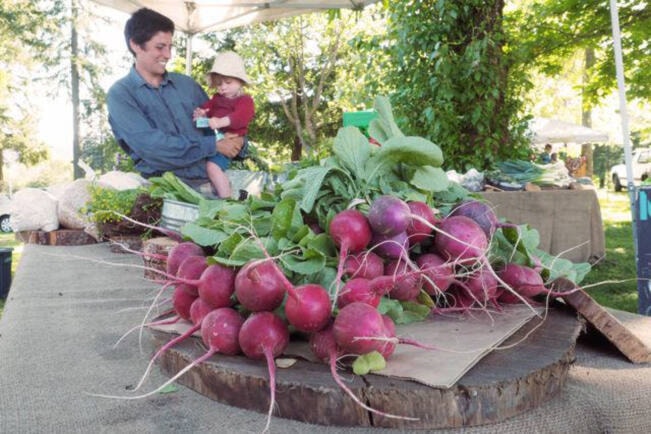BY NADINE WIEPNING
Vancouver Island imports close to 90 per cent of our food, but why should we be concerned? We have seemingly unlimited options and grocery store shelves are usually stocked with of a wide variety of goods from around the world.
However, the supply-chain shortages during the COVID-19 pandemic began to show us how vulnerable we are, and climate change will do the same.
British Columbia relies heavily on imported foods from warmer regions, in particular from California, importing 60 per cent of our vegetables and 70 per cent of our fruit. This system has worked well for many years, but is fragile and unsustainable in the face of climate change-driven unpredictable events like severe droughts, wildfires and floods that impact the harvests of these food-producing regions. Coupled with fluctuating oil prices and global conflicts, these factors threaten our ability to feed our population with affordable, healthy food, hitting hardest the people with a low income.
Recent inflation has increased prices on all foods, a trend that will continue according to Canada’s Food Price Report 2023, which predicts a 5-7-per cent rise in food prices, with the most substantial increases in vegetables, dairy and meat.
B.C. has higher housing costs than the national average, which means a higher percentage of incomes are spent on food that is often less nutritious, leading to health problems. The linkages between income and health are clear, but can be addressed by improving access to local food.
Food systems are very complex. Regions and municipalities are starting to plan and adapt to how we produce, process, package, distribute, market, and dispose of food. Official community plans include food security as a strategic goal and many initiatives have been developed to address this need, such as Vancouver Island Economic Alliance’s Island Good project. Increasing urban agriculture is a powerful method with multiple positive impacts that includes not only food security, but also greenhouse gas emissions reductions from urban greening and shorter transportation, as well as better health and social justice through education, training and improved access to locally produced food.
According to the Capital Region Food and Agricultural Initiatives Roundtable, Vancouver Island farmers only produce 5-10 per cent of the food consumed by Island residents, a drastic decline from 85 per cent in the 1950s. The main factors behind the decline include increased land prices, urbanization pressures, and lack of economic viability for young farmers to be able to take up the reins from the older generation. In the last two decades the total number of farm operators has declined, while the size of farms has increased, making it difficult for young farmers to get access to land.
In Nanaimo, Growing Opportunities community farm co-op is meeting this challenge by providing training and access to land at the Five Acres Farm in Harewood and at Cline Farm in the Westwood Lake area. They sell a Farm Gate Crate, as well as contributing fresh produce to Nanaimo Food Share’s Good Food Box program.
While it is not realistic to support ourselves entirely with locally produced foods, it is critical to become resilient. Our best bet is to put our precious dollars back into the local economy rather than in the pockets of giant corporations. So, visit the local markets, sign up for a food box, buy Island Good or B.C.-grown products from the grocery store, and sow a few seeds if you have the space.
Nadine Wiepning is a master of community planning student at Vancouver Island University.
editor@nanaimobulletin.com
Like us on Facebook and follow us on Twitter
